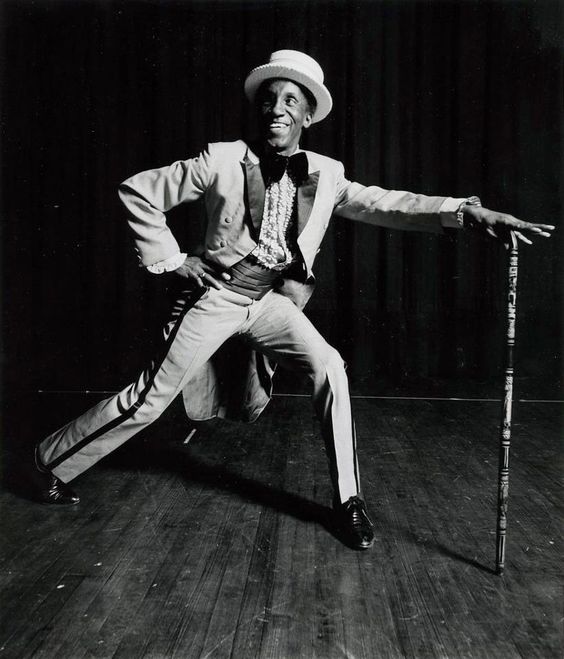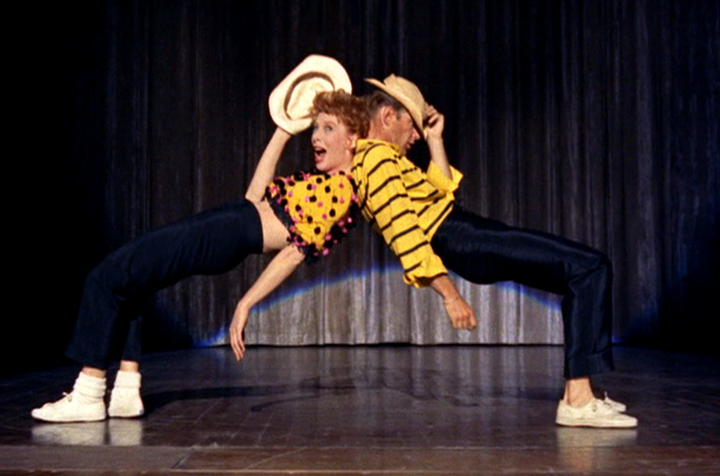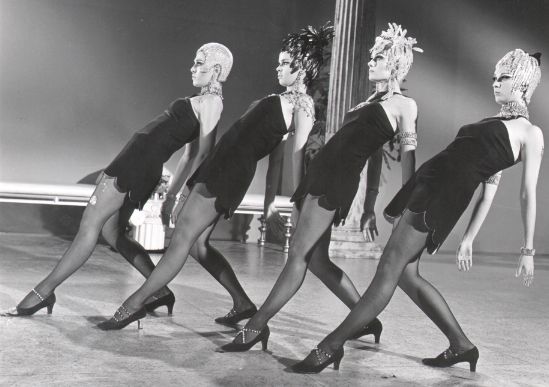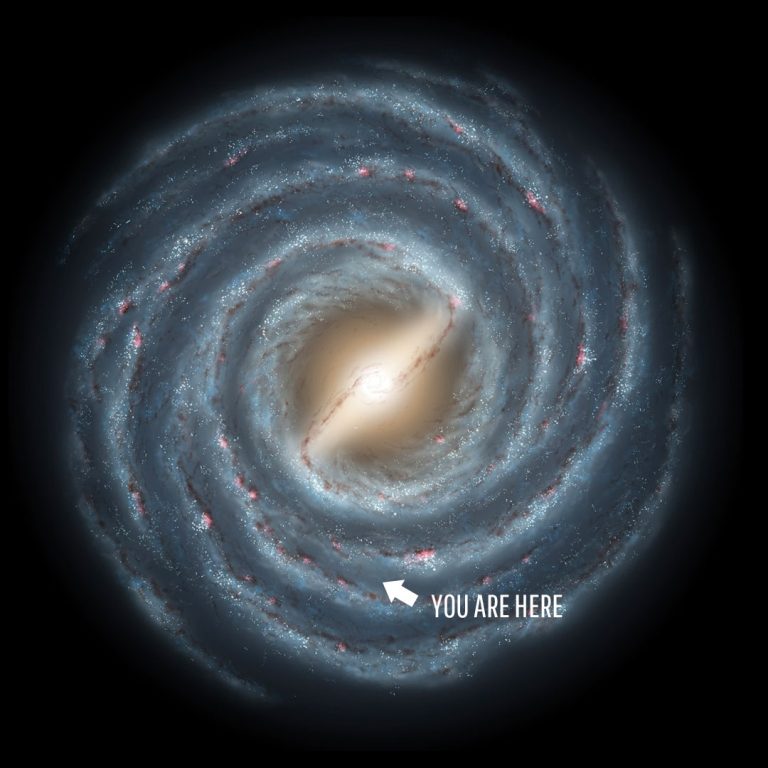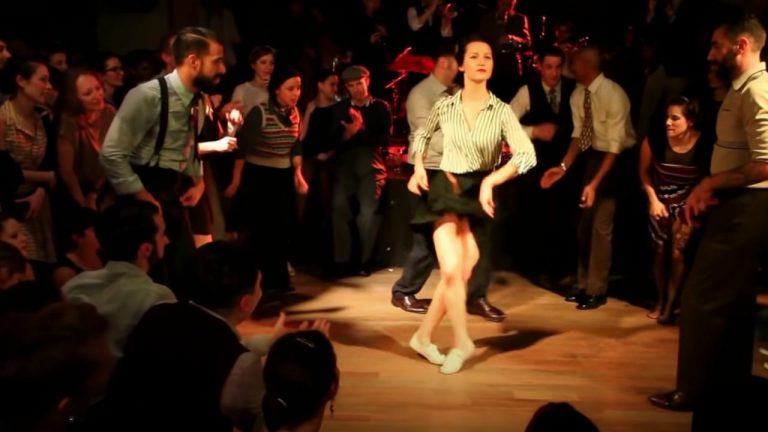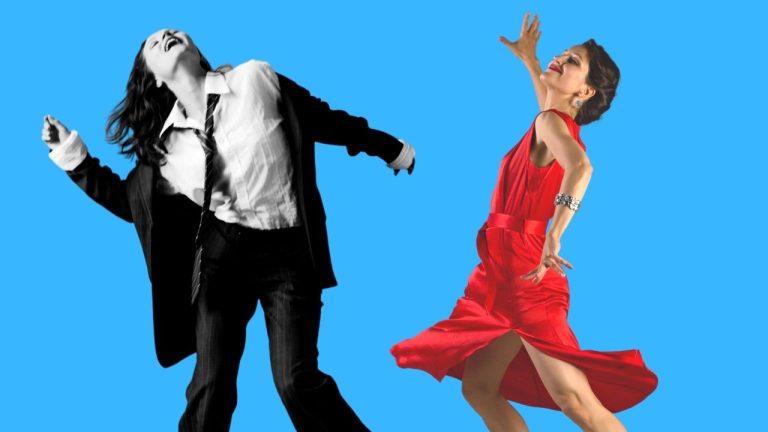Jazz dance is an umbrella term collecting many styles. Jazz dance has been constantly evolving, changing with time depending on who, where and to which music it was danced. In this blog we will overview 7 solo jazz dance styles and branches such as Buck and Wing, Strut, Eccentric dance, Charleston, Black Bottom, Broadway Jazz and Street Jazz.
From vernacular to stage
It is very interesting to discover how African cultural heritage shaped and influenced American dance today. From the early 18th West African traditions mixed up with the European ballroom dances and created the unique African-American dance style.
Dance was an integral part of slave plantation culture. It was a way to keep a continuity with African traditions: creating a community, a common language and a way of expression.
Let’s look at early black social dances in order to understand the vernacular essence and the roots of dances such as the Charleston dance, the Black Bottom and the Theatrical jazz.
Buck, Wings and Jigs
Like the Ring Shout and the Putting Juba, Back, Wing and Jig dance can be seen as a true example of plantation dances. They were developed as a response to the restrictions that white owners imposed on black people. These were the early black social dances.
Social dances
Social dances are hugely important to help us understand how people lived their lives. In social dances we see transformation of the physical gesture people do every day in to creative practice.
Tommy de Frantz
As Tommy de Frantz states, any social dance can be put into one of the two major categories: the buck and the wing dances.
The Buck are foot-working dances, like the Charleston or the Mash Potatoes. The Wing, are the torso engagement dances like the Twist or the Toon. And these dances come in cycles and tell us how the black dancers relate to the world and the music. Social dances define generations.
According to Tommy de Frantz, Professor in the Department of African and African American Studies in Duke University, African-American social dances emerged from a sort of trilogy of dances that came out around the 19th century. They are the buck, the wing and jigs dances.
- The Buck is a very percussive, rhythmical, grooving kind of dance. Buck dancing is regarded as an early form of tap dancing. The stomping of the ball of the feet is an early example of shuffles.
- The Wing dances involve a waving of the body. Actually different parts of the body can literally flap as if they were wings.
- The Jig dance are characterised by high energy quick moves and steps. It is a solo step dance from the British Isles. A type of Buck dance and Irish dance.
Strut
Strut is a ragtime dance with a brisk and self-assured walking rhythm. The cakewalk began as a strut dancing contest between slaves on Southern plantations where the best dancers earned actual cakes as prizes. Strut, as later cakewalk, and Turkey trot were ragtime favourites.
Dancers were dressed in their best clothes, usually with a hat and cane. Quite an eccentric and show dance it seemed to involve high kicks, flash big turns, jumps and splits. You can see a theatrical element in the dance as well. Dancers mimic the act of adjusting clothes before a flash step, as a sort of suspense move.
Watch Pepsi Bethel, Alfred Minns and Leon James perform the Strut in The Spirit Moves Part 1 film:
The Berry Brothers excelled with the strut and tap.
Eccentric dance
Eccentric dance is a special category. It is a style of vernacular dance in which the moves are unconventional and individualistic. It developed as a genre in the United States in the late 19th and early 20th centuries. The dance was a result of African and exotic dance influence on the traditional styles of clog and tap dancing.
“[…]eccentric” is a catchall for dancers who have their own non-standard movements and sell themselves on their individual styles
Stearns and Stearns, 232
The style may include elements of contortionism, leg-omania, and shake dancing.
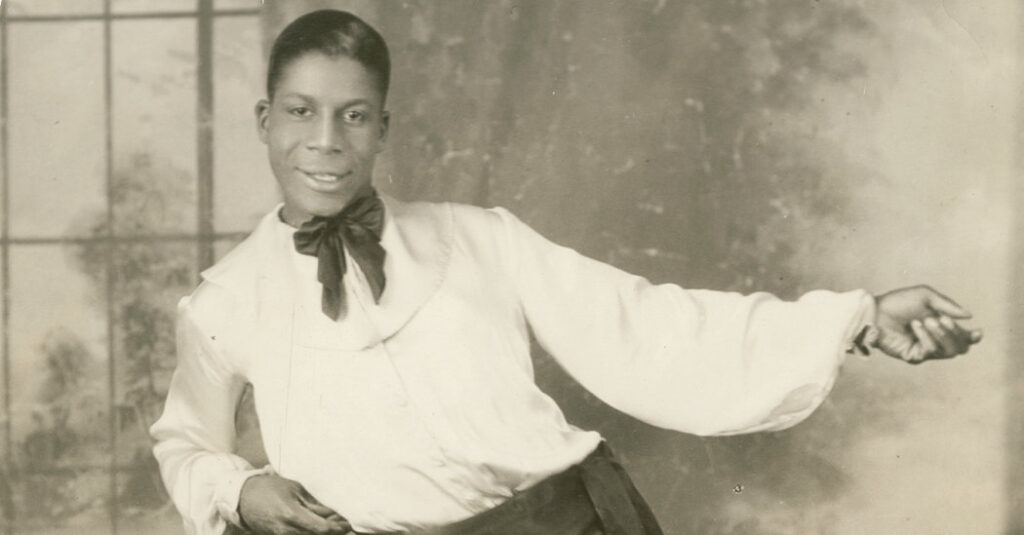
NYPL Schomburg Center for Research in Black Culture
Famous dancers of eccentric style are Earl Snakehips Tucker, Al “Rubberlegs” Norman, Ray Bolger and Jack Stanford. They used to build their act with their signature, individual movements including the common jazz vocabulary as shuffles, grinds, hops, kicks and twists. Tricks, leaps, splits or acrobatics were used as the spotlight elements to hold the audience’s attention.
“Snake-hips” and “Rubberlegs”
Two main moves of the eccentric dance style were the “snake-hips” and “rubberlegs”.
“Snakehips” characterised by flexible and boneless-like lower body. The “Rubberlegs” or Legomania, with its fluid leg movements kicks and jumps that can be related to “Kazotsky”, a Hungarian style of kicking from a squat position.
Eccentric dance performances were commonly seen in minstrel shows, music halls or vaudeville. Later they were accepted in musicals and movies for a comic relief.
There are elements of eccentric dance like shake, shimmies, legomania that can be found in Charleston and Black Bottom. Also, elements like acrobatics and leaps can be seen in tap dance. Think about performances of Nicholas Brothers, Berry Brothers and others.
The Charleston
The Charleston belongs to the family of African-American vernacular dances, and more specifically it is an authentic jazz dance as it was done to early jazz music (same as hot jazz, Dixieland jazz or New Orleans Jazz) combining elements derived from improvised African dance moves with jazz syncopated rhythms.
Relations can be found with Patting juba and the Ring shout dance. A good reference: About the Ring shout and Plantation dance ring shout.
In the early 20s the Charleston dance turned into an American craze. It became a feature of the Jazz Age, the flappers and Prohibition era.
The dance is said to have been “officially” popularised when it was danced on stage, by the all-Black Broadway show “Runnin’ Wild (1923), to the song “The Charleston” by the Black American composer James P. Johnson.
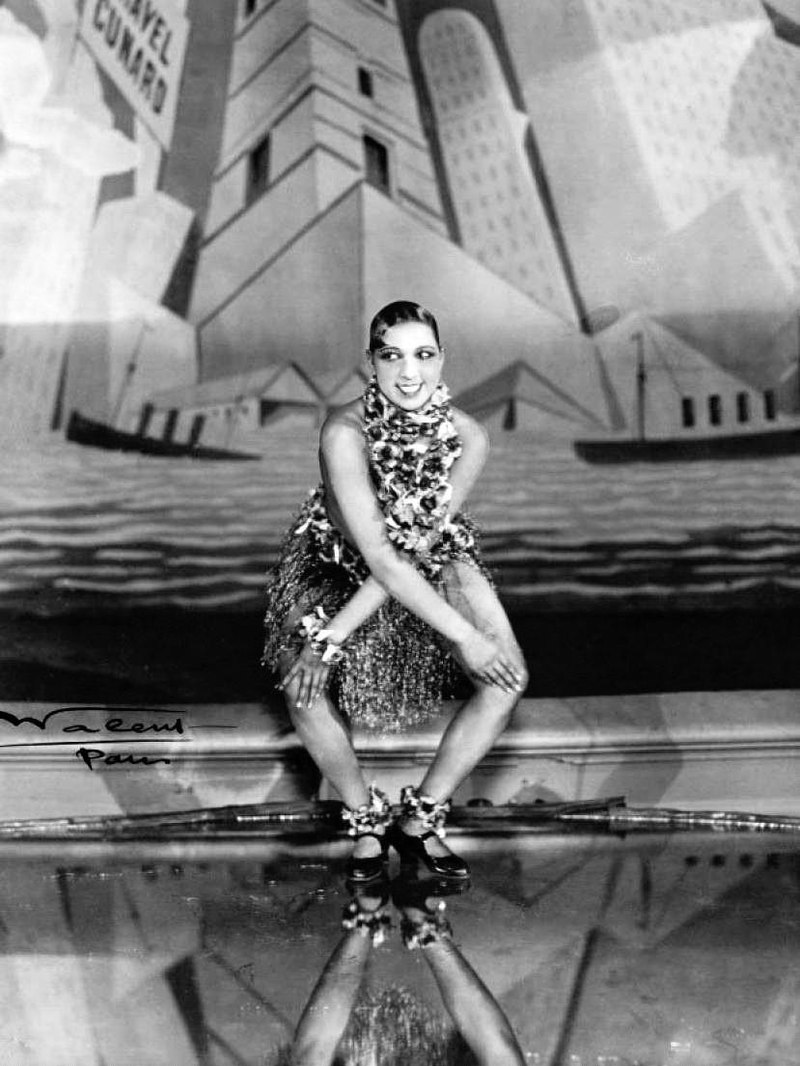
Walery, Polish-British, 1863-1929/Wikimedia Commons/Public Domain
Here is a video of two legendary dancers Al Minns and Leon James perform jazz dances talk show “Playboy’s Penthouse”. You can hear Marshall Stearns discusses the dance history with Hugh Hefner. This was probably filmed around 1960. Stears explains that there were 35 variations of the Charleston step. Minns and James show original charleston, scare crow, squat, around the world, hand to hand variations.
What are the real origins of the Charleston dance?
The origins of the Charleston dance can be traced back to the homonym city of South Carolina. There in 1891 the Reverend Daniel Jenkins, pastor of a small African – American church, founded an orphanage for African – American children.
In order to face the financial issues and needs of the kids, he set up a brass band, aiming to raise money by touring the northern states. In the beginning the band was playing the music of rural African-American life. At that period a new music was becoming popular – ragtime. Ragtime was a new style of playing, characterised by highly syncopated “ragged” melodies. Dance bands and orchestras began to “rag” or “jazz” up their standard repertoire.
The “geechie” steps. The early Charleston steps.
Interestingly, as noted by observers, the Jenkins Band used to play a number of “geechie” tunes. Geechie is another name for Gullah. The Gullah is a west African tribe that was brought to the American lowlands to cultivate rice. As in the Gullah culture, music was not separated from the dance it accompanied. Hence it was common to see the orphanage band performances of geechie music being “conducted” in front by a young boy dancing “geechie” steps. The early Charleston steps!
The Black Bottom
More or less parallel to 20’s Charleston, another wild African American vernacular dance began its social and stage rise. It was called the Black Bottom. It originates from New Orleans or Georgia (around 1910s). Th dance was probably influenced by an earlier dance named the Echo.
The name of Black bottom appeared in a popular hit composed by Perry Bradford “The original Black bottom dance”. Music sheet for the song provided instructions about how the dance was done together with the song. Bradford is said to have seen this dance in Jacksonville. African American dancers used to do it in the Deep South.
In 1924 Black Bottom entered the stage with the show Dinah (New York). It became popular with the George’s White Scandals in 1926, played at the Apollo, in Harlem. Starring the dancers Ann Pennington and Tom Patricola. George White’s scandals were Broadway revues produced by George White (1919–1939), on the model of the Ziegfeld Follies.
Ann Pennington’s career started around 1911 on Broadway as chorus girl. Her signature dance was a variation of the Black Bottom. Although she was a queen of tap dancing and the Charleston.
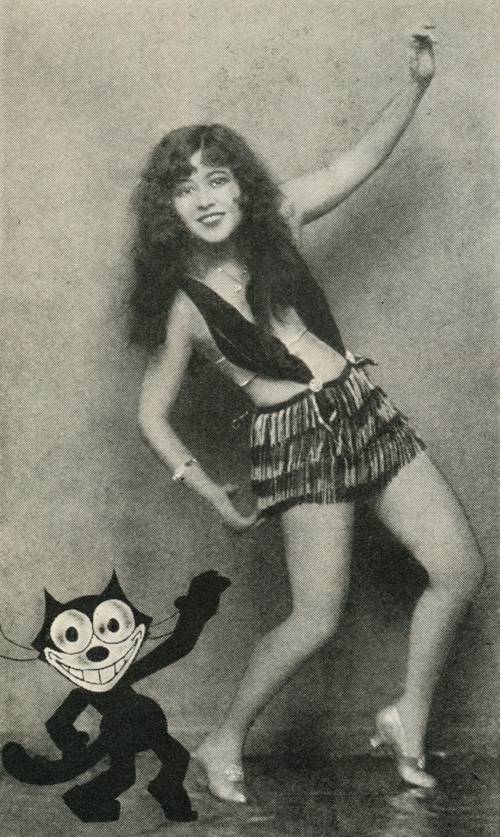
Black Bottom started as a solo dance. One would emphasise either up or off beat movements, slap the backside while hopping forth and back. We can see the African influence in rhythm stomps, shuffles and torso movement. Also, the characteristic hand clapping and body slapping (hambone) can be traced back to its ancestor Patting Juba and its “patting”.
Miss Mildred Melrose, a well known dancer at the Piccadilly Cabaret demonstrates the “real” Black Bottom dance.
Broadway jazz
The term “broadway jazz” refers to the style of dance which is commonly seen in shows on Broadway. In fact, since 1940 it has been used with a different name: theatre jazz and / or musical theatre. Those terms mainly came with Bob Fosse and Jerome Robbins choreographic styles that they brought to Hollywood and Broadway.
Bob Fosse style
Bob Fosse, an American dancer, choreographer and director had a major impact on jazz dance. His unique style is influenced by dancers like Fred Aistaire, Jack Cole and Jerome Robbins. He revolutionised dance performances seen so far in musicals. Fosse’s style is characterised by the use of props like hats, canes and chairs, provocative moves.
The famous, shaking, jazzy hands, snapping fingers, you’d recognise his signature style behind the curtain. Fosse opened a different angle on what is a beautiful movement and a perfect line. With the curved shape shoulders and the closed-in positions of the knees, Fosse made an “ugly” aesthetic.
Bob Fosse made each tiny detail a big deal, every small thing tells a story, revealing something about the character. Without such a specificity, all the structure could fall apart. For Fosse each dancer is first of all an actor.
His angular and acrobatic style is probably due to his commercial dance career in nightclubs. In any way, mastering technique was not the only thing. He wanted dancers being able to play their emotions out while dancing. Which is the actual essence of Theatrical dance.
Theatre jazz
Earlier theatrical jazz pioneers that undoubtedly inspired Bob Fosse’s work are Jerome Robbins and Jack Cole, with Cole being regarded as the “Father of Theatrical Jazz”.
In the theatre you want to see real people doing real things, expressing valid emotions in an artistic, meaningful way, disclosing bits of insight that will transfix you and make you understand something about life, and about yourself . . . I just try to touch the dancer at the centre of his emotion. I try to remind him of what he is a dancer, and actor, a real person. If you’re ashamed of this or that emotion, you can’t dance. You yourself may not behave a certain way as a person, but when you dance you must bring real emotion to whatever you’re doing. Isn’t that what dancing is about – emotion, life, and not just patterns in the air?
Jack Cole in a 1968 interview for Danze magazine)
Read more about America’s pioneer theatre dance artists here.
Street jazz / Jazz Funk
Street jazz or jazz funk come from the combination of jazz dance and hip-hop.
According to Robery James (144) it is a commercial jazz dance style that incorporates street steps with dance studio training. Fused together with a strong background academic jazz and ballet technique it is mainly danced on funk jazz, broken beat, music with a strong percussive beat.
Final word
The origins of African-American dances like the Charleston, the Black Bottom and the Theatrical or Musical Jazz can be directly linked to Black vernacular social dances. They developed between the early 19th to 20th century within Black African communities. Some of these dances included elements of animal mimicry like the Buzzard Lope, the Pigeon Wing, Snake Hip, and Turkey Trot. Dances such as these were similar to the African tribal dances celebrating a successful hunt. Animal mimicry through dancing movements can be seen in The Charleston, the Black Bottom, the Lindy Hop. Typical elements of African tribal culture celebrated in ring dances such as Ring Shout and the Juba, are still visible nowadays. You can encounter them at jam circles and jam sessions, from Authentic jazz to Urban dance world, from UK underground jazz to House and break dance.
Jazz dance styles are still evolving nowadays. They are though rooted in vernacular dance styles. Hence it’s important to discover their history. When we are confident in the fundamentals, we can build a confident path forward.
References
The Wizard of Oz: Musical Adaptations from Baum to MGM and Beyond by Danielle Birkett, Dominic McHugh
Doin’ the Charleston: Black Roots of American Popular Music & the Jenkins Orphanage Legacy by Mark Rowell Jones
One Thousand Novelty and Fad Dances by Tom L. Nelson
Encyclopedia of American Folklife by Simon J Bronner
Beginning Jazz Dance by Robey, James
Choreographing Copyright: Race, Gender, and Intellectual Property Rights in American Dance by Anthea Kraut
The Spirit moves: a documentary about Black social dances
The Spirit moves: a documentary about Black social dances (Part 2)
Interesting information about Social dances
The history of African American social dance by Camille A. Brown
Black Dance in the United States from 1619 to 1970, by Emery, Lynne Fauley.
Editor – Ksenia Parkhatskaya
